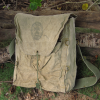stainless steel
A steel alloy containing between 10-30 percent chromium, which has unusual heat and corrosion resistance qualities. Nickel, titanium, copper, or other elements may be added to the alloy to enhance strength and rust resistance of the final alloy. Stainless steel is used in the making of a variety of products such as machinery parts, cooking and kitchen appliances, cutlery, and medical instruments.










